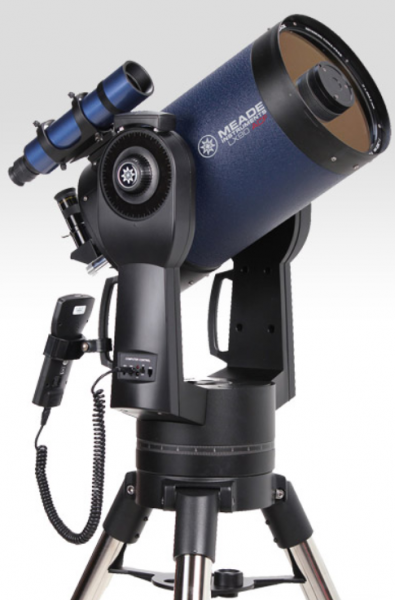
Last year we reviewed the Meade ETX 90 Observer telescope which is an excellent unit for people getting serious about wanting to study the observable universe. We liked the build quality and portability of that scope.
This time around Meade sent us the LX 90, which at the AUD4500 price point is a much more advanced unit though similar in design and operation.
The 8″ LX90 we reviewed has an 8” diameter f/10 ACF optical system (focal length 2000mm). It’s the smallest in the LX90 series.
Interestingly, this scope incorporates the two features that we would like on every computer telescope: GPS based easy set up and remote access and viewing.
Our anticipation to start imaging the heavens with the optional colour camera as well as with my Nikon DSLR is building as we begin assembling the unit.
Unboxing
It might be helpful to read our previous review regards the set up and basic operation of this type of telescope. It will also explain the ingenious compact mirror design.
This particular unit is very similar in design and has the moniker Advanced Coma Free which basically means that even stars at the very edge of your view will be pin sharp.
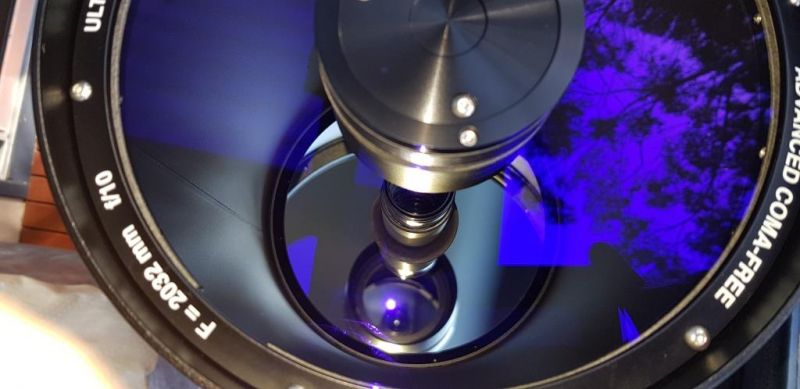
It will be clear from the size and the weight of the two boxes that the LX90 came in that portability has taken a bit of a back seat with this bigger unit. Whereas our previous review unit came in a nice bespoke aluminium case and similarly the tripod in an easy carry bag, the LX 90 might need to find a more permanent place for operation.
I have a reasonably clear section of sky available to me between some high trees on my property but I’d also like to take this telescope to our wheat farm with unlimited views and no light pollution. So don’t throw out the boxes!
First impressions count and again we are awed by the magnificent build quality that Meade put in their products. Superb image quality cannot be achieved without a solid precision platform.
Terrestrial Viewing
Just trying out the LX90 as a terrestrial scope:
Please note: that second picture is NOT Jupiter but just some bark on a Tasmanian blue gum tree….

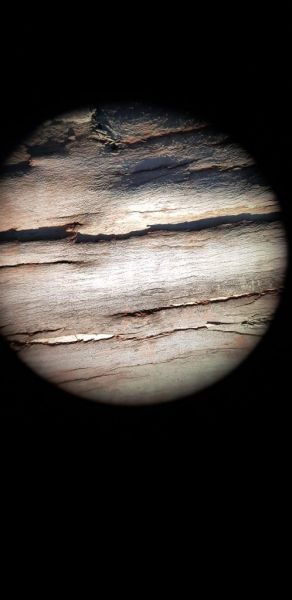
There is only one slightly frustrating aspect when putting together the scope. The extensive manual is not put together in a very logical way, mixing set-up procedures with discussions of features.
Another point which could be improved is the CD-ROM disk that comes with the shipment. It contains files and drivers and brochures that are way out of date. Perhaps it’s a pointer to the longevity of the LX90 model which first saw (star)light in 2000 and having been refined ever since.
Refined electronics, an improved AudioStar Guidance System, GPS and Wi-Fi are all keeping this model very relevant to someone who takes astronomy seriously.
We will focus in this review mainly on the features that make stargazing so easy and enjoyable.
So we’ll look at the Stella Wi-Fi Adapter, Remote Operation and various ways of astrophotography with a Nikon DSLR and the Meade LPI-G Colour Camera.
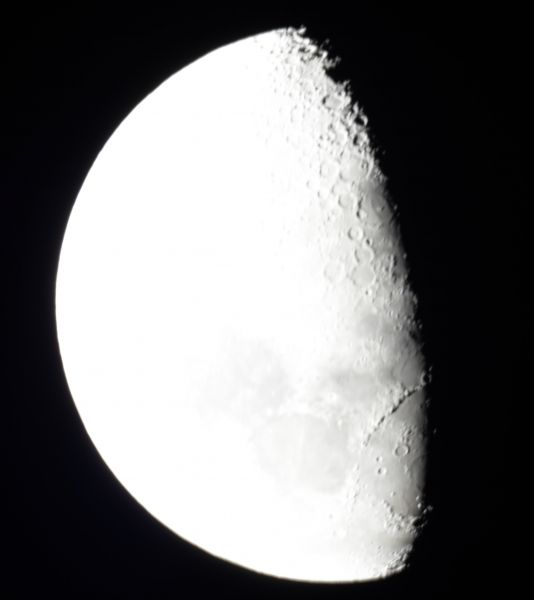
A couple of things were immediately noticeable compared to the previous unit we reviewed. The viewfinder is different from the Red Dot Finder which was pretty effective and now replaced by an 8 X 50 Rear Focus Viewfinder. This Viewfinder is doing a great job with a field of vision of 5 degrees but I noticed one slight problem: Its location is too close to one of the mounting forks and in normal operation that doesn’t pose a problem but an unexpected automatic alignment manoeuvre made the scope swing through the nadir point and slightly touching the metal fork with one of the Viewfinder mounting rings…
Very handy and necessary with this much heavier unit are the three handles around the optical tube.
Incorporated on top of one of the fork arms is the GPS unit. You might recall my slight frustration in trying to align the previous scope using the guidelines in the manual which were primarily aimed at a northern hemisphere audience. The GPS makes it also much easier and more precise.
The Handbox with the tens of thousands of stellar objects in its database, is still very much part of the LX 90 which I didn’t find all that easy to use. However, with the optional but highly desirable Stella Wi-Fi unit we may be able to bypass the Handbox for the most part. We’ll see….
On another note: The base of the scope contains the battery department that drives the motors and also the handbox is powered by these 8 C size batteries. Normally, the batteries will power the LX90 for about 60 hours. This is great for using the scope away from electricity in the field but be warned: the wires to connect the battery packs with are thin and fragile. They could break very easily in a hard to get to place. There are also other power options available fortunately.
Quicker Alignment with the Sony GPS Unit
Precise alignment based on your location is necessary for tracking the heavenly bodies. You can of course operate the scope completely manually and that’s easy enough to do with the moon and the brighter planets. But you’ll be constantly adjusting the scope as objects quickly slide out of view. Hence the automatic tracking which depends on accurate location and alignment. The Sony 16 channel unit will make things a lot easier and alignment is complete when the scope slews to a couple of bright stars in your hemisphere.
Remote Operation with the Stella Wi-Fi Adapter
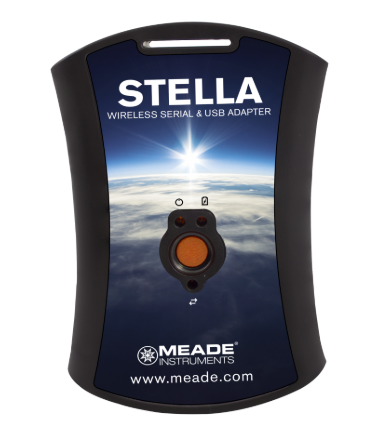
The optional but highly recommended Stella Wi-Fi unit allows you to remotely connect with this telescope using a tablet with the StellaAccess app. If it works as advertised you should be able to retreat to the warm comfort of your home whilst operating the scope remotely. Now that would be very nice as the best viewing conditions are always on clear cold nights which might see you hunched over the telescope, squinting through an eyepiece for many hours….
Before we get any warm, fuzzy feelings about this prospect, please note that the Stella unit needs to be connected with Meade #505 Cable Set which was not included with the Stella box but has to be ordered separately.
The Stella creates its own Wi-Fi hotspot so there’s no need for internet connection, or jump on someone’s Wi-Fi network. Perfect when away from civilisation!
The StellaAccess App
If you’re familiar with Google’s Sky Map which is an incredibly handy app for getting familiar with your patch of the night sky, you’ll find Meade’s StellaAccess app giving you even more detail about every noteworthy celestial object. The app costs about 20 bucks.
In the time we had the Meade LX90 we enjoyed sharing the night sky wonders with various visitors. Viewing conditions here on the South Coast have been rather spotty and much more time could be spent (and will be spent) on trying to get some good imaging. For now I’ll include a couple of images that have been made by others with the LPI-G. (Lunar, Planetary Imager and Guider). We will update the article later.
The LPI-G Advanced Colour Camera
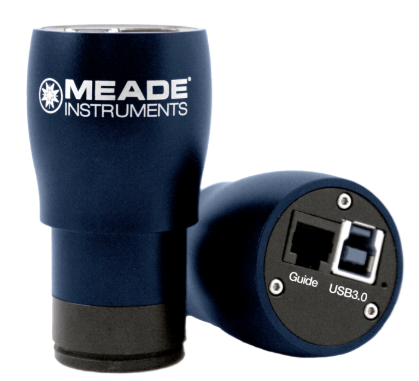
Please note that if you wish to use the LPI-G with a Meade LX90 telescope, the Meade Auto-guider Port Module (SKU: 07509) is required. The port module is plugged into the telescope’s auxiliary port enabling it to be used as an auto-guide port.
Specs for the LPI-G Advanced Colour Camera:
• High Speed USB 3.0 A male to B male gold plated connectors’ cable/ 1.5m
• ST-4 Guide cable – 1.5m guide cable
• 1.25″ nose extension with C-mount
• Meade Sky Capture Software on CD ROM- Includes Installation and Operating Instructions.
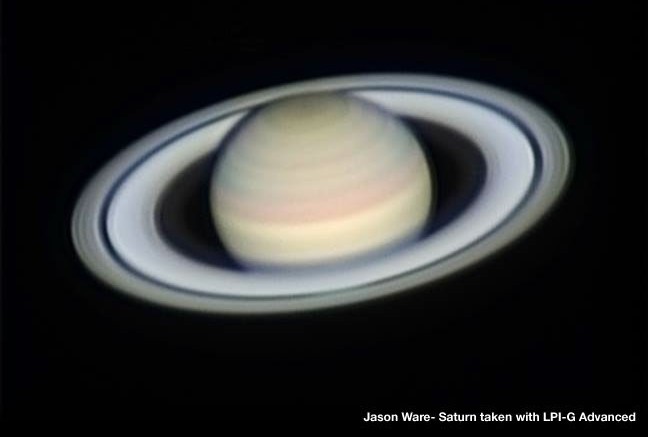
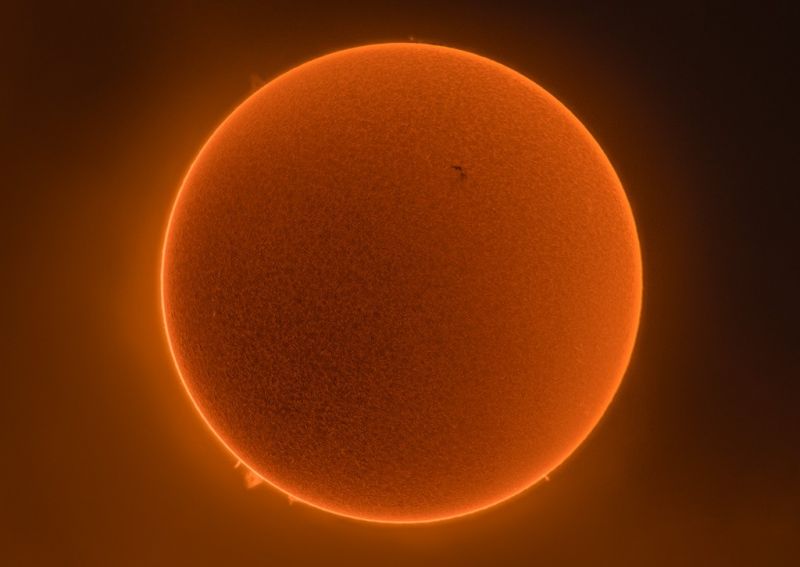
Conclusion
There is probably no better time than right now to invest in some serious kit to observe the universe. Why? For starters, anything about space is very much in the news. We’ve seen blood moons, amazing solar eclipses, UFOs (?) plenty of unidentified stuff anyway, and recently we were part of the biggest stargazing event in the world here in Australia.
Note that apparently some 3000 new telescopes were bought here in Oz for this event…
Also right now, Jupiter is very visible and coming up is also the Mars opposition on July 27, the closest approach to earth which will make Mars look 6 times bigger than when it is farthest away from Earth on its elliptical orbit. Great time to be looking up!
We’ve found the LX90 from Meade to be a very solid precision instrument that has made observing the night skies exciting, exacting and extra easy with all the modern gizmos on this legendary platform. Particularly when equipped with the Stella WI-Fi adapter, GPS and the advanced colour imager.
Highly recommended if your budget allows. But do check out the Meade website for all their offerings.
Wishing you clear skies and keep looking up!
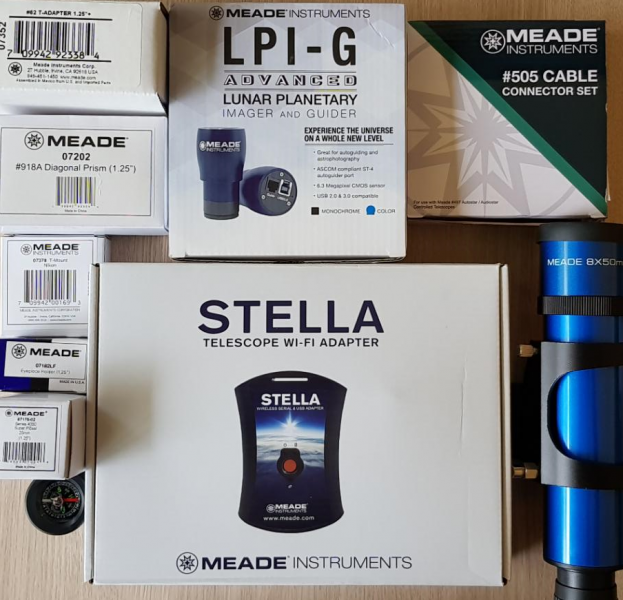
Weight: 15kg (33 pounds) and tripod 9 kg (19 pounds).
RRP in Australia $3999 but have seen it advertised for $3299.
The optional extras as reviewed: The LPI-G colour camera is around USD380 and the Stella Wi-Fi adapter is USD199.


